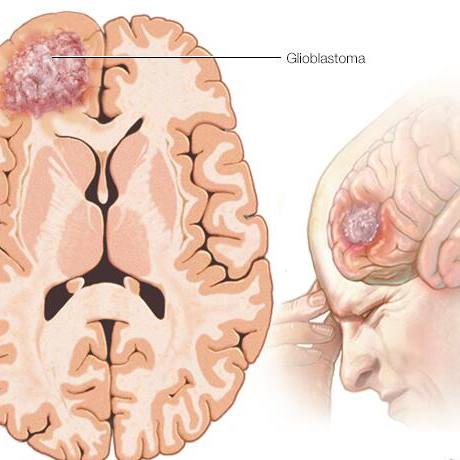-
Research
Big data dive confirms early intervention nets better outcomes for people with new onset AFib
Recent research led by Mayo Clinic showed the findings of the international clinical trial — Early Treatment of Atrial Fibrillation for Stroke Prevention Trial, or EAST‐AFNET 4 — are generalizable to routine clinical practice. The new findings are published online in the Journal of the American Heart Association.
The original clinical trial included 2,789 patients diagnosed with new onset atrial fibrillation, or AFib, randomized to receive either early rhythm control or usual care. A study report in the New England Journal of Medicine describes the interventions, as well as primary and secondary endpoints, thus:
“Early rhythm control included treatment with antiarrhythmic drugs or atrial fibrillation ablation after randomization. Usual care limited rhythm control to the management of atrial fibrillation–related symptoms. The first primary outcome was a composite of death from cardiovascular causes, stroke, or hospitalization with worsening of heart failure or acute coronary syndrome; the second primary outcome was the number of nights spent in the hospital per year.”
EAST-AFNET 4 was stopped earlier than planned, due to clear efficacy of the interventions. However, the results of one clinical trial do not typically lead to widespread practice change or the development of new or updated guidelines.
“Paradigms in the therapy of AFib have shifted and the role of rhythm control therapy is becoming increasingly relevant in reducing the risk of cardiovascular events,” says Jannis Dickow, M.D., a cardiologist and the current study’s first author. “Therefore, more data and randomized clinical trials are needed to update guidelines.”
Using real-world data to determine generalizability
In their study, Dr. Dickow and his colleagues used the OptumLabs Data Warehouse (OLDW) to identify nearly 110,000 patients who were newly diagnosed with atrial fibrillation during the enrollment period of EAST-AFNET 4. Of this diverse group of U.S. patients, 27,106 received early rhythm control through ablation or antiarrhythmic drug therapy. The remaining 82,633 patients did not.
Of the total cohort, 72.9% of patients would have been eligible to participate in EAST-AFNET 4. To participate in the original trial, people were older than 75, had a previous stroke, or had two other stroke risk factors.
“When clinicians make decisions, they might ask themselves, ‘do the trial results apply to my patients?’ says Xiaoxi Yao, Ph.D., a cardiology-focused health services researcher and the study’s senior author. “In our study we found three in four patients would have been eligible to participate in this pivotal trial, suggesting good generalizability of the trial findings.”
As in the clinical trial, this study showed the same clinical benefits of early rhythm control in patients with new onset atrial fibrillation. This was true for virtually all patients — whether or not they would have been eligible to participate in the trial.
“Another major contribution of our study is that we examined the treatment effect among patients who would have been excluded from the trial,” says Dr. Yao. “Clinical trials often have strict inclusion and exclusion criteria, and thus, there are evidence gaps for patients who would not have met the criteria to participate.”
“Real-world evidence leveraging big data collected as part of routine care delivery can fill these evidence gaps,” she says.
Advancing evidence-based transformation
The researchers believe it is necessary to change routine care practices for patients with new onset AFib.
“Patients with AFib are at risk to experience serious cardiovascular complications, such as an ischemic stroke,” says Dr. Dickow. “Our study confirms the findings of EAST-AFNET 4 and indicates that patients who are newly diagnosed with AFib should receive rhythm control therapy within the first year after the diagnosis.”
Drs. Dickow and Yao hope their study will accelerate a change to practice guidelines.
“There are no standards establishing early rhythm control as routine care for patients newly diagnosed with AFib,” says Dr. Yao. “The most recent guidelines for management of AFib were published just as the results of EAST-AFNET 4 were being shared — and thus did not incorporate the trial findings.”
“Furthermore, guidelines are unlikely to be updated based on the results of one clinical trial, no matter how beneficial the study intervention appears,” continues Dr. Yao. “Our findings strongly support action to update existing practice guidance — sooner rather than later, and formally adding early rhythm control to the clinician toolbox.”
Dr. Yao and her Mayo colleagues continue to delve into the data on patients with new onset AFib. Currently they are working on an artificial intelligence tool to help determine which patients might be more suitable for ablation than antiarrhythmic medications.
Behind the collaborations that build the evidence
At Mayo Clinic, research drives patient care, and education provides the critical thread weaving together research and practice. Teams comprised of diverse experts work together to investigate ways to improve patient outcomes and the way people experience health care. Often, as in this study, the multidisciplinary collaborations stretch beyond Mayo Clinic, linking other national or international colleagues.
Dr. Dickow is currently finishing his physician residency in Germany, at the University Heart and Vascular Center Hamburg. He helped conceive this project during his time as a Cardiovascular Medicine research fellow in the Translational Interventional Electrophysiology Laboratory at Mayo Clinic in Rochester, Minnesota. This laboratory is directed by Douglas Packer, M.D., a Mayo cardiologist and study co-author.
Dr. Dickow’s primary mentor is Paulus Kirchhof, M.D., director of the Department of Cardiology at the University Heart and Vascular Center Hamburg, Germany. Professor Kirchhof led the EAST-AFNET 4 clinical trial, which included patients at 135 sites in 11 different countries. He and another Hamburg-based colleague, Leon H. W. Dinshaw, M.D., also are co-authors on the current study.
Dr. Yao is an associate professor of health services research in the Mayo Clinic Robert D. and Patricia E. Kern Center for the Science of Health Care Delivery, with a dual appointment in Cardiovascular Medicine. This study joins a growing body of work led by Dr. Yao and Mayo cardiologist Peter Noseworthy, M.D., demonstrating real-world efficacy and generalizability of specific clinical trials. Dr. Noseworthy directs the Heart Rhythm and Physiologic Monitoring Laboratory at Mayo Clinic, which includes the externally available Cardiac Monitoring Program. He also is an alumnus of the Kern Health Care Delivery Scholars Program.
The center leads the relationship with OptumLabs for Mayo Clinic, and center scientists have published nearly 200 studies identifying areas for potential improvements in health care delivery using the OLDW. This vast data collection contains de-identified data from a large U.S. health plan with claims from commercial and Medicare Advantage enrollees, as well as de-identified electronic health record data from a nationwide network of provider groups.
The other Mayo co-authors are cardiologist Paul Friedman, M.D., and data scientists Holly Van Houten and Lindsey Sangaralingham. The latter two are staff in the Mayo Clinic Kern Center for the Science of Health Care Delivery. Sangaralingham is an assistant professor of health services research, and among other activities, manages the OptumLabs relationship and Mayo scientists’ use of the OLDW.
The full study report is available for free on PubMed Central. More information about the researchers, source data, research methodology, funding, individual disclosures, references and other supplemental materials are included.
###








